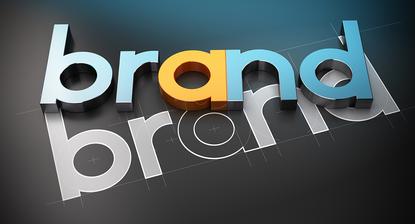Brand creation: It’s just a name…or is it?
- 25 February, 2015 08:28

brand name construction
Creating a name for a new brand—either a company or a product—is an exciting venture. You are preparing to attend the very birth of what will hopefully become a profitable and dynamic force in the market.
When involved in the creation of a new name, there are two distinct types of forces at work. First are those who fret with a fever over exactly what the name is, will represent and how it will be received in the market. Then there are those who are a bit more seasoned, understanding that the name is just the beginning. A name is, after all, mostly just a name. It is not until you unleash various marketing communications initiatives that the name gets a life that takes on real meaning and begins to define the brand.
Consider some powerhouse industrial brands (e.g., Shell, IBM and Ericsson). How much have their names contributed to the position and strength of these brands? If IBM had been named Chaterfield, would the company and its businesses be smaller, larger or otherwise significantly different today? Probably not. If the change happened now, the effect would be dramatic. But it’s a lesson about how awareness and perceptions of the IBM brand have become a major part of the company.
Does it matter what a company calls itself? Think of B2B brands such as SICK, Rentokil or DAF, and you can think of a lot of associations that are negative. However, these companies exist as strong players in their markets. While a name is not everything, it can help to not have an automatic handicap, much like DAF found when entering the UK market. With a different name, the first few years could have been easier. Luckily for them, they make a good product.
The reason why more seasoned marketers don’t get overly concerned about a name is that good branding and a good product can make up for any shortfall, but success is easier if the name is a good one. Think about the people you know. Their names are their brands. There is a clear connection between a name and how it shapes us, just as it can do with a company. The names of industrial companies and how they are built as brands are not dissimilar to the way we brand ourselves.
Name Selection
There are limits to how far you should go with naming. Obviously, calling a high tech security company “Asleep Alarms” or an accounting firm “Book Cookers” would put those companies well behind the eight ball, and it would take some brilliant marketing communications to turn those names into something commercially positive.
Global use is a vital element to name selection and requires vigilance. History is littered with failed brands that entered the market and found that their names translated poorly. Big multinationals, such as Mitsubishi, have run into problems with the Pajero, which means “wanker” in Spanish, and Rolls Royce’s Silver Mist was not a hit in Germany—silver s#!t, anyone?
It is prudent, to say the least, to check translations in the markets you plan to enter to avoid costly and highly embarrassing launches. This takes only a few moments with Internet tools and online translators if you are in a big rush.
Name Selection Criteria
Often a panel selects a new name. Not many people have the will or stomach to dump a name on people; rather, they seek buy-in from others. The first step is to consider what type of name you need for the brand. There are three main categories to consider:
- Generic/functional: A common-use name that is attached to a root source or outright denotes what it represents (e.g., Jack’s Paper company, BMW)
- Pros: Easy to create and understand
- Cons: Restrictive and difficult to trademark
- Descriptive/experiential: A play on words to signify ingredients or experience (e.g., InfoSeek, Explorer)
- Pros: Easy to create and understand
- Cons: Difficult to trademark
- Invented/evocative: Something never existed before that was made up (e.g., Yahoo!) or that applies to something completely out of context (e.g., Virgin)
- Pros: Easy to trademark; can be applied across diverse business interests
- Cons: Hard to create; requires investment to create meaning and relationship
From a trademarking and branding perspective, the invented and evocative names are preferred by many because the chances for ownership, value and differentiation are significant. However, be prepared for a lot of workshopping.
Morphing Names
Many names start off in the world with clear direction but are then hijacked by the market or the need to change in order to eliminate historical issues, such as empire building and slaughtering of innocents. Think of Imperial Chemical Industries, now ICI, which can be traded anywhere.
You may face a time when you have to make a big change. International Business Machines was descriptive of the company’s business, but knocking this down to IBM made a world of difference and future-proofed the brand.
So what, indeed, is in a name? The truth is: whatever you want to be in it. All it takes is a clear brand strategy, well executed marketing communications and the right amount of time and dough.
About the author Kimon Lycos has 20 years of international experience with B2B marketing, communications and business development. He co-founded international B2B advertising agency Laurent & Partners in Stockholm, Sweden, in 1998. His expertise as a lecturer, opinion writer and speaker is recognized by universities and business media. He is currently an adjunct professor with RMIT Universit and owns and operates Mihell & Lycos, a B2B marketing communications agency.This article originally appeared in CMO Council’s Marketing Magnified monthly newsletter, February 2015.

